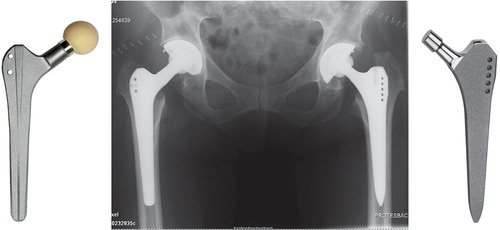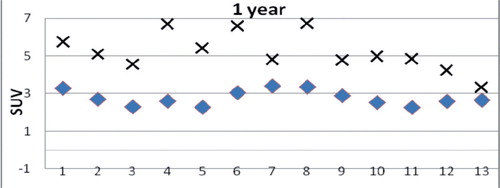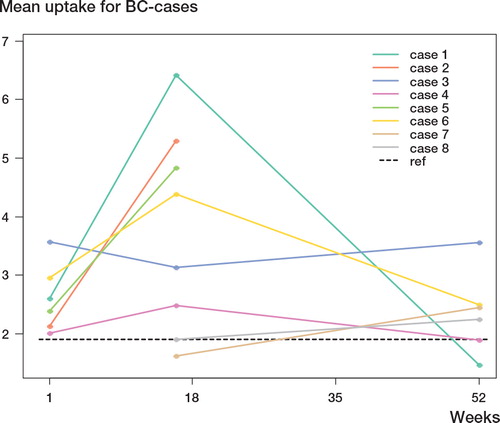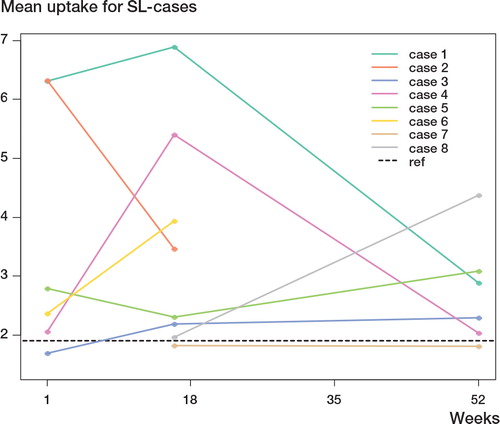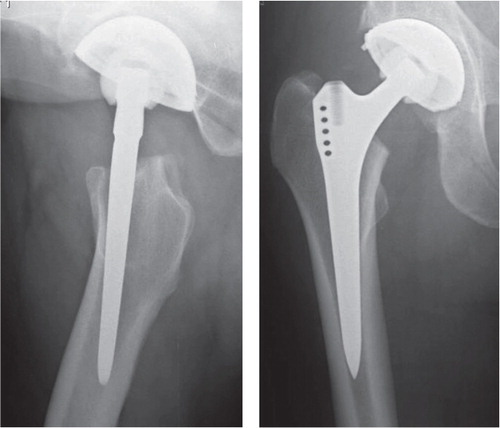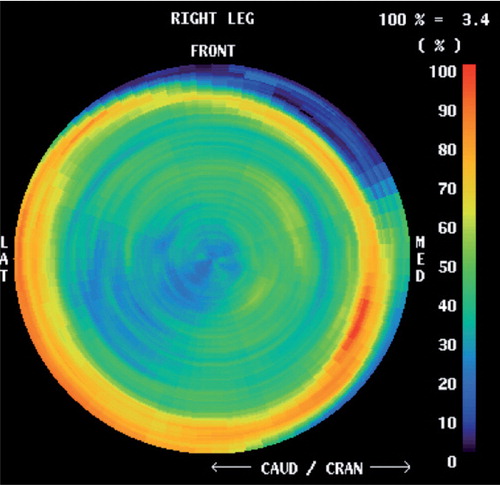Figures & data
Figure 2. From left to right: CT-, F-PET-, and combined PET/CT-images of pelvis and hips 4 months after surgery. BetaCone stem in the right hip and SL-PLUS in the left hip. Blue color indicates low activity and white color indicates high activity.

Figure 3. The upper femur treated as a cylinder, folded out so that it becomes a disc named a Polar Map. Each of the 7 Gruen zones represents 1 ROI in the disc; 6 other ventral or dorsal ROIs complete all the regions adjacent to the stem.
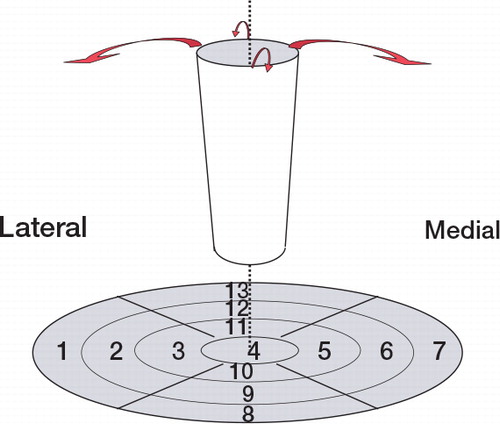
Table 1. Mean uptake per group over time (with p-values from 2-sample t-test against reference)
Figure 4. Uptake (in SUV) for group and time. (The error bars are the standard deviations of the corresponding samples).
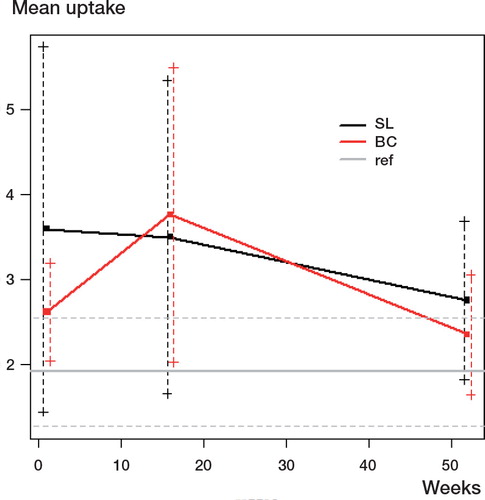
Table 2. Differences in uptake (BC – SL) (p-value from t-test of “mean = 0”)
